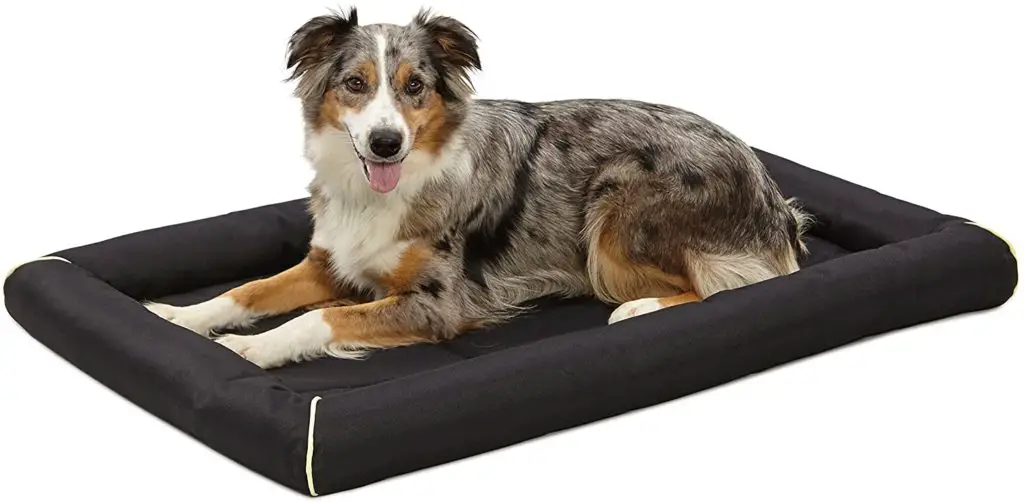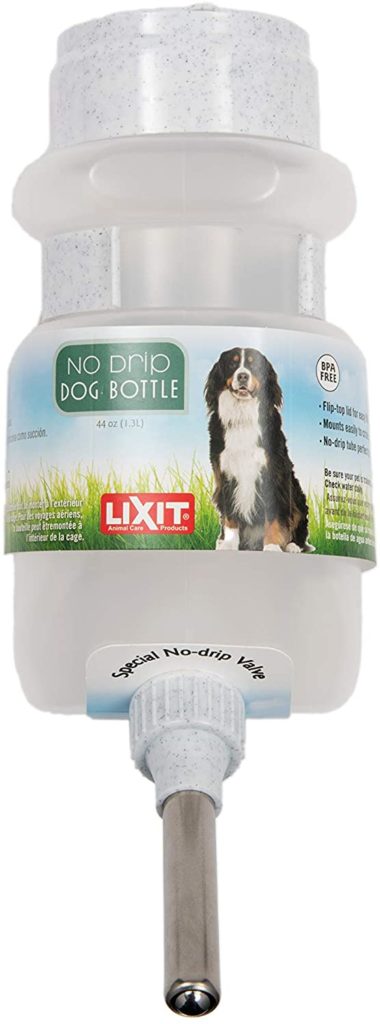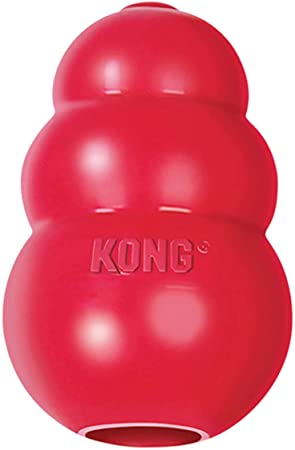How to Crate training a New puppy step by step ?
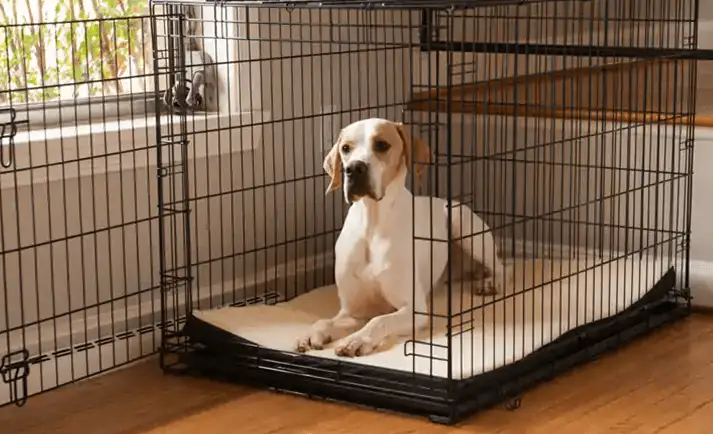
Do you have a New puppy or are you going to have one very soon and you want to know everything about “Crate training”?
That’s what we’re going to see step by step, and I’ll tell you:
Why and when should you start training your New puppy?
A dog is either a follower, or a dominant, and you must make your new puppy understand as soon as he arrives at your home that you are in charge, in a way, the Male/alpha female and he is a subordinate who must obey the rules that you will set if he wants to be part of this pack (that’s how the dog sees your family !!).
Dogs are creatures that love habits, and if you don’t teach them the right habits, they will simply have their own habits and these are usually the ones we hate , like chewing everything they find, peeing all over the walls of the house…etc…
Dogs & especially puppies don’t care how they get what they want as long as they can get it, and Crate training them is teaching them the rules they have to follow so they can get what they want from us.
When should I start crate training?
Puppies start learning as soon as they open their eyes, and you can start teaching them tricks as early as 6 to 7 weeks of age
Thus, as soon as the puppy reaches 8 or 9 weeks of age, he already knows that he can only relieve himself in a well defined place, he must not chew everything that falls under the canine …etc….
What is the objective and purpose of crate training your new dog?
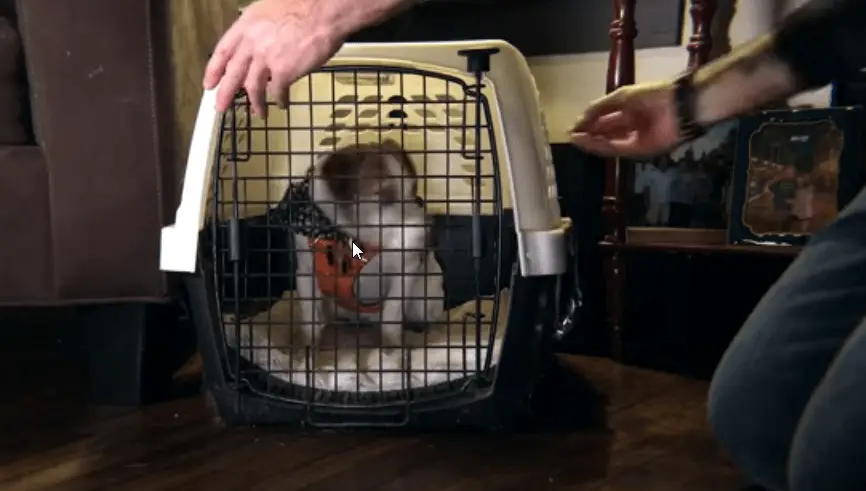
To succeed in crate training, you must understand what it is really about!
You must always keep in mind that to train your new puppy is basically to make him understand that:
1 – You are in control of the resources he needs, like food, toys, outings, treats…..etc
2-If he wants to have access to these resources, he must work to deserve them according to the rules you set, and he must use what you teach him to earn these things!
If he wants for example his bowl of treats, he must obey before the command “Sit”, and if he wants to go outside, he must accept the leash, to walk beside you, come back when you call him … etc.
What are the first lessons a new puppy should learn as soon as he arrives home?
In fact, as soon as he arrives at your home, you must put a collar and a leash on your new puppy and you only take the leash off to put him in his crate
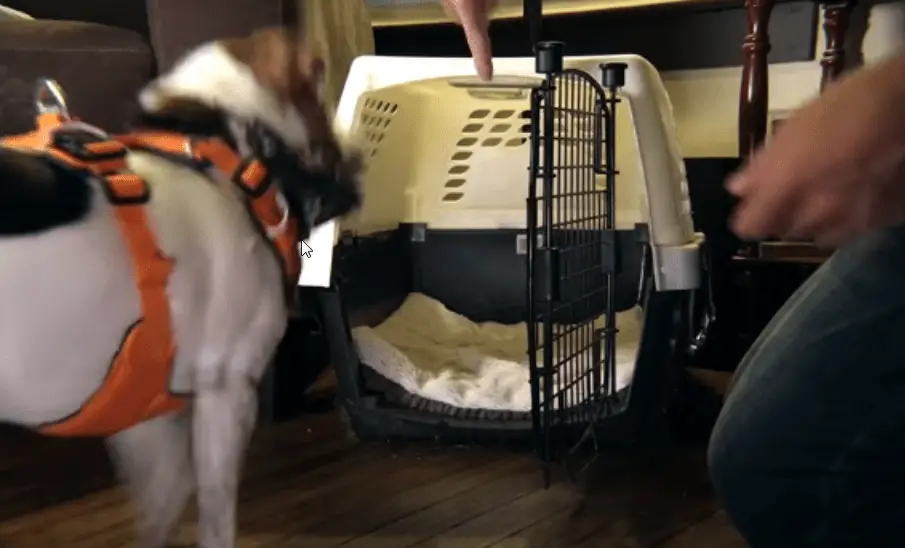
So that he understands that the rules have changed and that he must learn the new rules.
What you can do is to bring a piece of cloth or an object from the breeder’s house to bring back some of the smell of his mother, his brothers … and to put this object in the crate to reassure the puppy when you are not with him.
The Puppy Crate is not a cage but a shelter
You must know first of all that contrary to us who love open spaces, the dog loves confined spaces and will love his crate if you train well and especially if you do not make the mistake of using the crate as a punishment for your puppy !!
Dogs are denning animals, so your new puppy will love his crate like a wolf or a cub loves his den !!
What is the interest of Crate training ?
The Crate will help you to control the destructive habits of your puppy, he won’t have access to your shoes or socks…etc to chew them and avoid excessive barking while you are not hot …
Getting your dog used to the crate will make your life easier when you take him to the vet for example or he can spend some time in a crate, the same if you have to travel with your dog …etc
It’s good to put your dog through Crate training but make sure that you don’t use crate as an alternative to Dog sitter by leaving your dog locked in it for hours !
What is the best crate for my new puppy ?
There are several models of crates, but I would advise you just two models : the plastic crate, buy the big model or the Wire crate because you can add elements to it as your puppy grows up:
1-The Plastic Crate
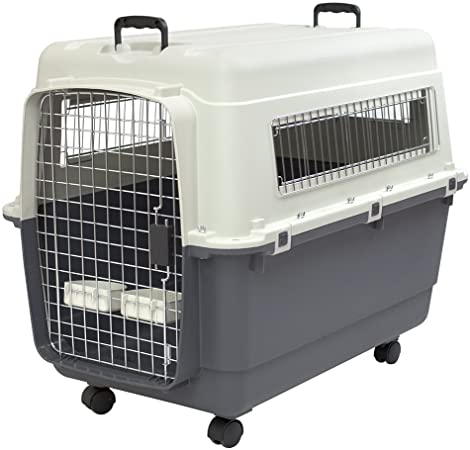
- Ideal to start crate training
- Easy to clean
- They are warmer and the puppy will feel safe in them if you put his bed in them and even if you cover it a little bit.
- They are ideal for transporting your dog, by car and even by plane.
2- Wire Crates
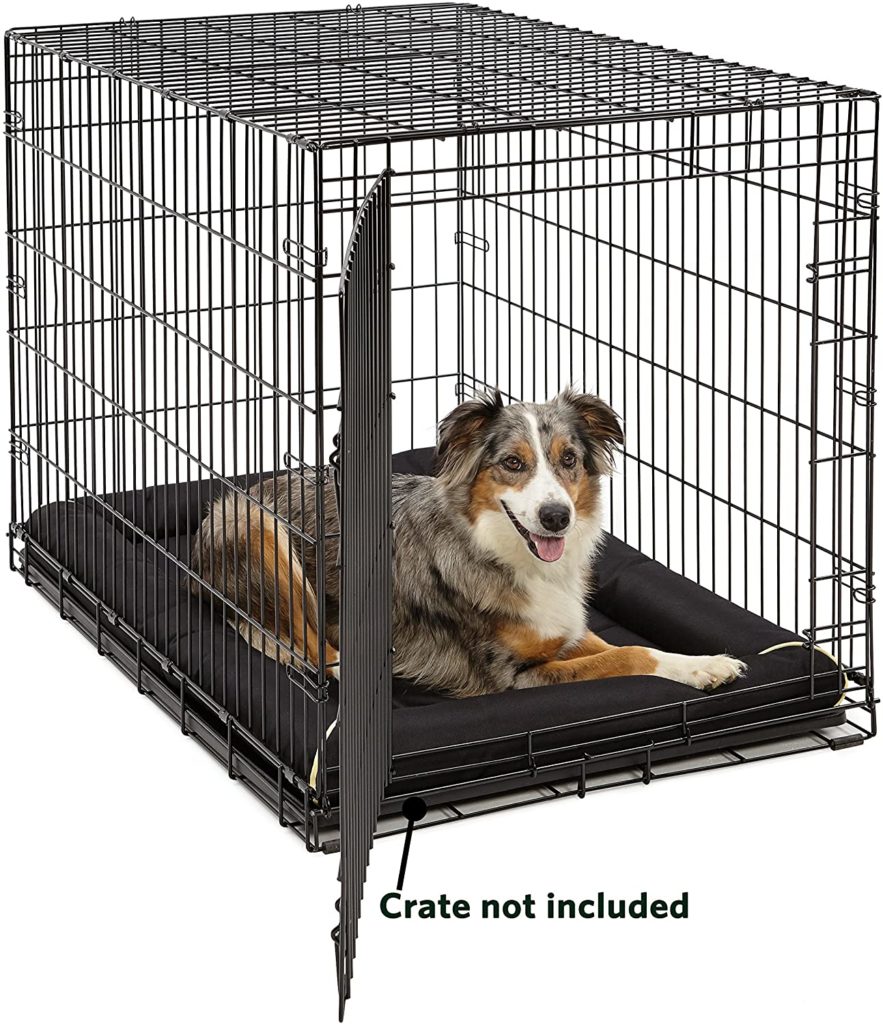
They just have the advantage of offering more space and visibility to the puppy, they can be useful also in the car but not in the plane.
3- Pens Exercise
It is used for the transition period of your puppy, it offers a semi-freedom to your puppy ; used just with small dogs.
There are also Soft-Sided Crates, better just when you travel with your puppy, ideal for hotels too but they are not recommended for Crate training.
Heavy Duty Crates (for dogs that travel a lot like competition dogs….) and Fashion Crates made with wood for example, some of them even fit in other elements of the house, they are recommended for dogs that have finished their crate training.
For the crate training, you will need dog toys like the chew toy and the kong that you can fill with treats and leave in the crate for your puppy to occupy himself in your absence.
How do I get my new puppy used to his new crate?
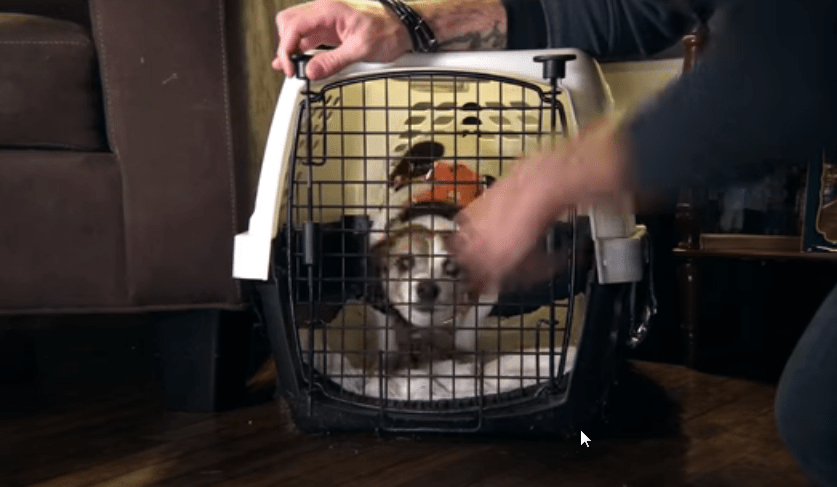
It is very important to help the puppy overcome the anxiety and stress due to the separation by avoiding what’s triggering it and gradually get him accustomed to his new environment is his crate of course.
The first thing to do even before leaving the Breeder’s house is to take something, an object or a piece of cloth from the crate or the room the puppy used to occupy and bring it back to put it in his crate.
I learned this by listening to Martin Deeley, an expert in dog training; the crate will quickly become the puppy’s personal space, and very quickly and by natural instinct, he will start to take care of it, which means
He will for example wait to get out of the crate to relieve himself or your new puppy will cry until you take him out to relieve himself (especially at night, that’s why you have to bring the crate closer to your puppy’s room at night). …etc
He also said that you should never use the crate to reprimand your puppy, on the contrary, you will do everything you can to make your puppy feel safe in his crate, and that he sees it as his own den, a safe place and not a prison !
Here are some practical tips to get your new puppy used to his Crate
- Use a treat or his toy ‘( a kong ) to attract your puppy in the crate.
- You can also give him his meals right next to the crate and then inside (go in gradually), close the door when your puppy eats his food, and open it as soon as he finishes the first few times, leave the door of the crate closed a little longer the next day …
- Start by leaving him alone in the crate for 2 minutes, then 5 then 10 then half an hour, 45 minutes …etc and you will get him used to your absence.
- You must ignore your puppy before leaving him alone and for the first few seconds when you come back to him.
- Never leave food in the crate, just water and the puppy’s favorite toy.
- You can put the crate in your room at night, this will help your new puppy to feel safe.
- Never take your puppy out of his crate when he is whining, wait until he calms down.
- When you come back to take your puppy out of his crate, never reward him.
- Always remove your dog’s leash and collar before putting him in the crate.
It’s normal that you hear your puppy whinning when you leave him alone in the crate, you must refrain from coming back to him, it’s a normal behavior in dogs to follow the leader of the pack, which is you in this case and the crate prevented him from doing so, that’s why he cries.
You must be able to recognize when your puppy cries or barks just to try to convince you to get him out of his crate, which you must never do, and recognize the whining of a puppy who wants to relieve himself (they usually arrive within 20 minutes after the meals).
Crate training game to get your new puppy used to his crate
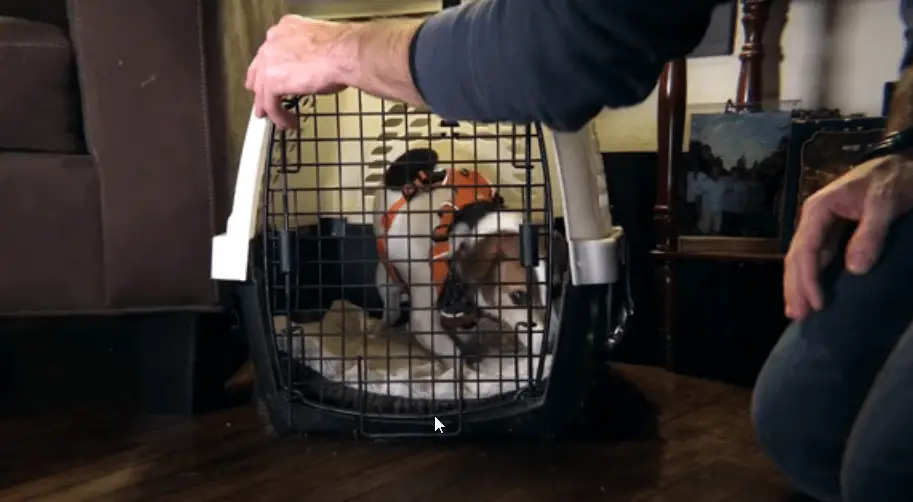
This exercise aims to get your new puppy used to crate, the tone of your voice should be soft and friendly when talking to your puppy, spend some time with him/her before and after this game so that it becomes part of his daily life as part of the usual games:
1-Throw a treat in the crate and ask your dog to bring it back, do this 5 times.
2-Then continue to do this exercise but this time hold your puppy for 2 to 3 seconds and prevent him from going directly into the crate when you throw the treat, then let him go and get it (this will make your puppy more enthusiastic about going into the crate).
3-Now you’re going to throw a treat inside the crate without your puppy noticing! To do this, throw the treat in the crate at the same time you distract him by giving him another one while he looks away.
Now ask your puppy to enter his crate and he will love to find a treat inside even if he didn’t see you throw it in! repeat this exercise several times
4-This time, make sure to hide the treat under the bed of the crate so that the puppy stays even more time in his crate.
5-Finally, you can close the crate door while your puppy is trying to get the treat from under the bed, and when he finally gets the treat, give him more treats through the crate door, let him out after two or three treats that you would give him through the crate door.
In this way you will gradually increase the time your puppy will spend in his crate and the puppy will no longer see this crate as a punishment but rather as a good place that he will associate with treats, safety and well-being.
How do I get my new puppy used to the leash?
Don’t forget that the puppy is used to having total freedom at the breeder’s, and as soon as you put the leash on him, he will sit or lie down if you pull on it, and as soon as you stop he will start to pull on the leash !
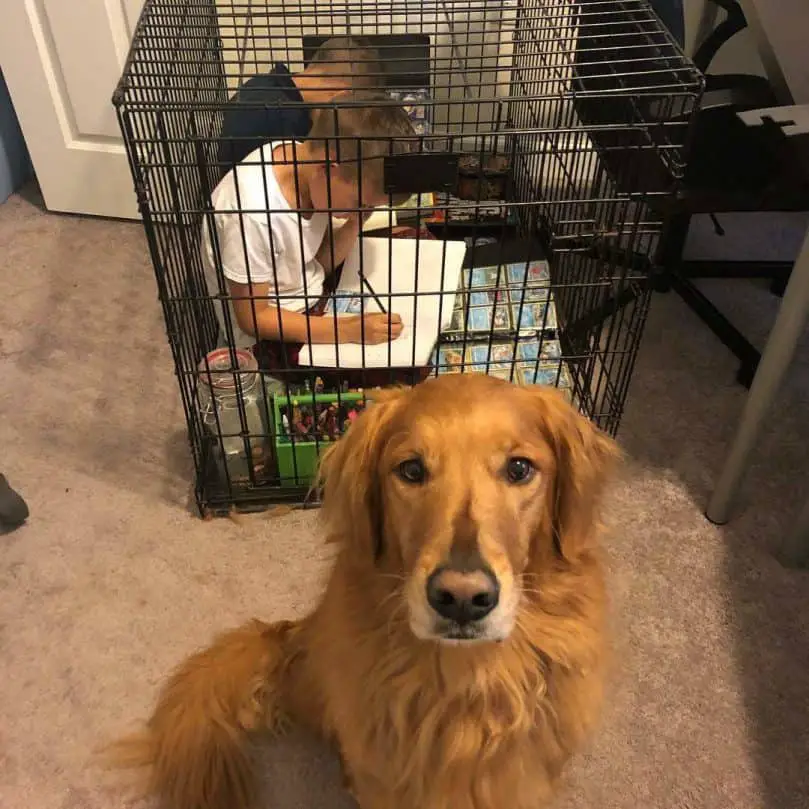
What to do then ? I have to say that I see a lot of such cases in the Park, people who pull their puppies on the Lawn because they refuse to move forward !!!
The secret N°1, is to treat it like a game, and you just have to get the puppy used to a toy, and use it to make the puppy walk behind or next to you…
You just have to Squeak a Squeaky toy of your puppy to make him follow you , because it’s not a fight anymore but you invite him to play and they love it !!!
The Secret N° 2, is to let the puppy go where he wants when you walk him on the leash, just making sure he doesn’t put himself in danger like crossing the road or picking up things on the floor etc….
When the puppy will understand that the leash is not there to restrict his freedom but on the contrary it is thanks to it that he could leave the house and that it is only a kind of connection with you and not a restriction, the puppy will quickly assimilate the fact of putting his leash to positive thoughts, and will no longer refuse to put it on because he will link it to the walk outside, play with you and the freedom to go where he wants as long as there is no danger for him …
Should I put the leash on my puppy in the house?
Yes, the first few weeks, you must put the leash on your puppy as soon as you take him out of his crate.
He will eventually understand that the leash is there for his safety and you will be able to react very quickly and correct your puppy every time he tries to chew on something … or commit a mistake.
The leash will also keep you close to your puppy especially when he wants to do his business, you will react quickly to take him outside for example! and also apply the Potty training.
Supplies that i recommend for the crate training
Here are some products you will probably need if you start crate training your puppy :
- A bed for crate
- An orthopedic bed
- A bottle of water to hang in the crate when you leave your puppy in it.
- A kong that you can use to lure your puppy into the crate by filling it with treats so that the puppy spends some time in the crate and gets used to it!
